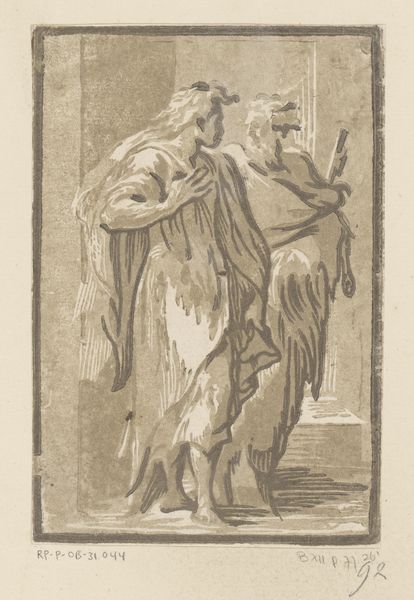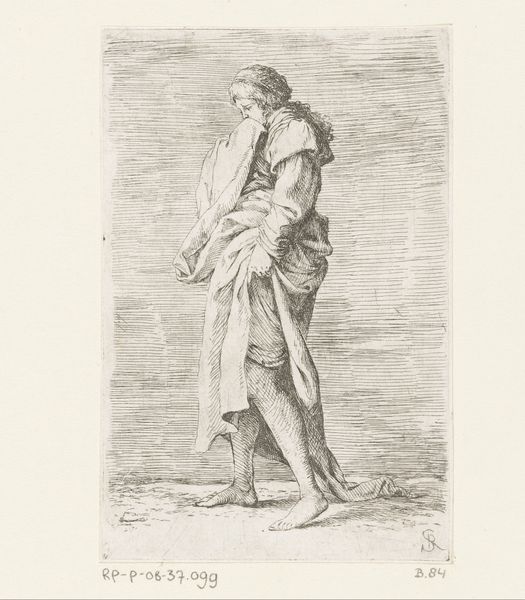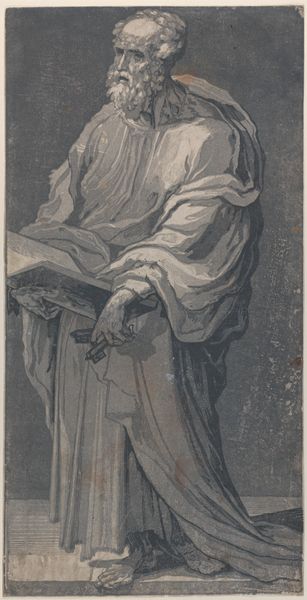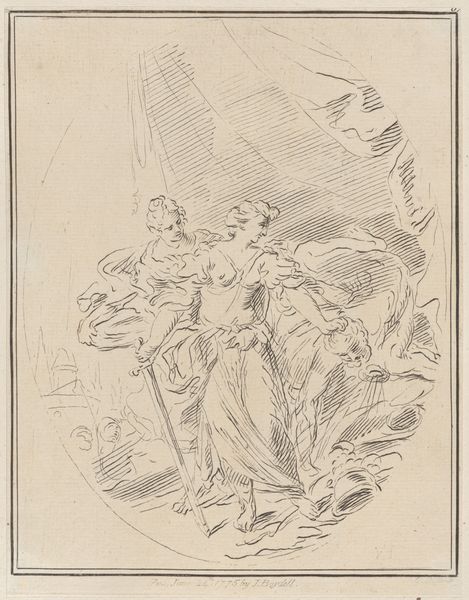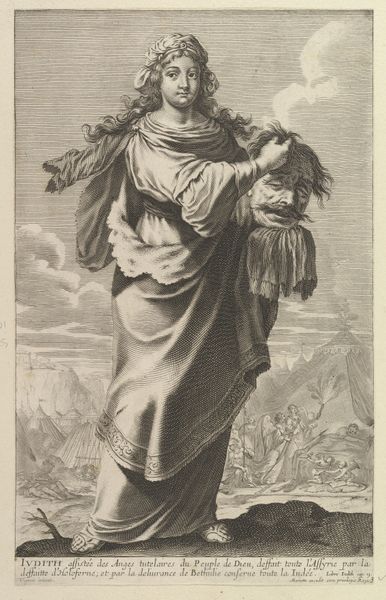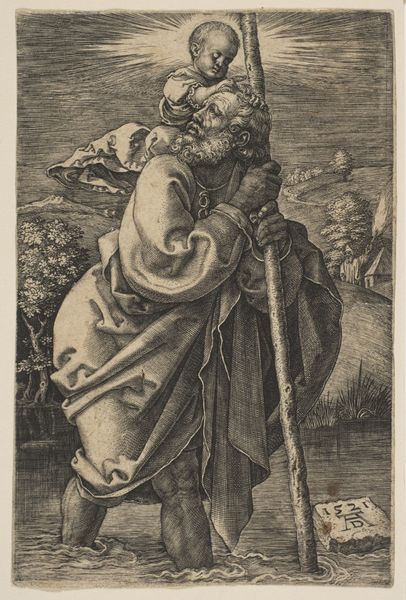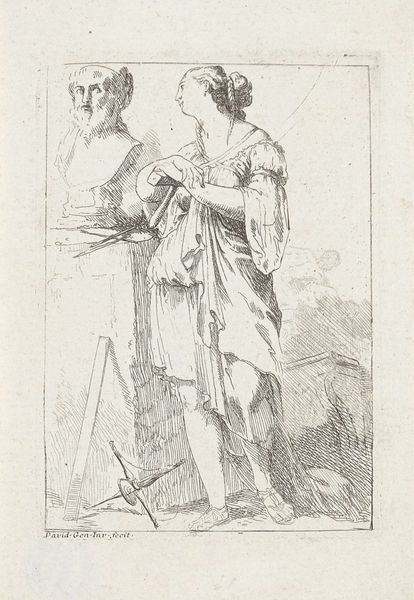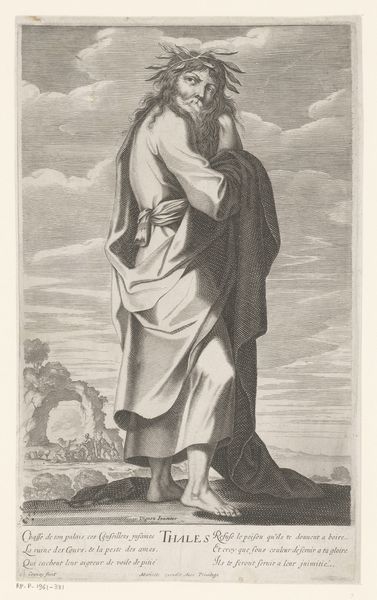
print, engraving
#
baroque
# print
#
figuration
#
line
#
history-painting
#
engraving
Dimensions: height 169 mm, width 110 mm
Copyright: Rijks Museum: Open Domain
Giovanni Battista Mola made this print, Judith with the Head of Holofernes, at an unknown date with etching. Mola portrays Judith after she has seduced and murdered the Assyrian general Holofernes, beheading him in his sleep, thus saving her people from the enemy army. Made in Italy during the Baroque era, the print presents an interesting moment in the history of image-making. It highlights the complexities of female agency and violence. The story of Judith was often invoked during the Counter-Reformation as a symbol of virtue triumphing over evil. However, in Mola’s interpretation, Judith appears less triumphant and more contemplative, inviting a more nuanced interpretation of her actions. The presence of her maidservant further emphasizes the collaborative nature of her deed, blurring the lines between individual heroism and collective action. Understanding Mola's "Judith" requires us to consider the social and political contexts in which it was created. This is where historians are crucial to understanding how art gives meaning to its own time. By consulting historical texts, religious commentaries, and artistic trends of the period, we can interpret the role of the artwork within its historical context.
Comments
No comments
Be the first to comment and join the conversation on the ultimate creative platform.

